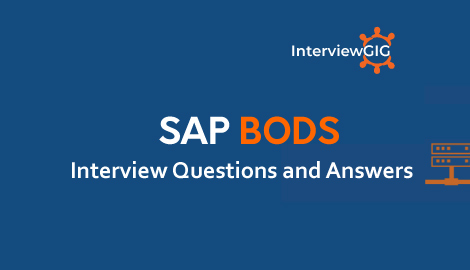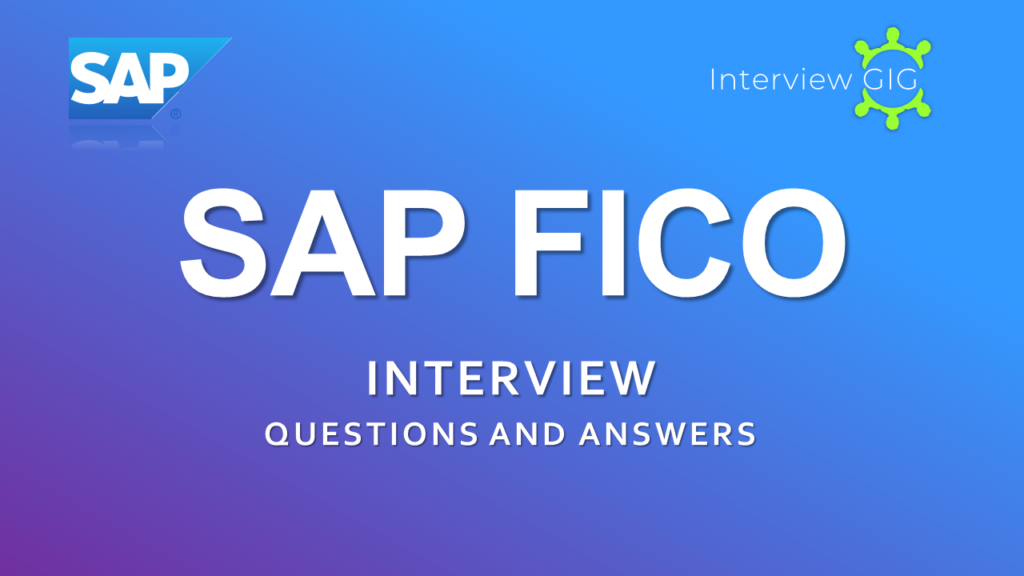What is SAP Solman and why it is used?
SAP Solman is SAP product to provide a centralized, robust solution management product that allows you to manage technical support in distributed environment. It covers all key functions like solution deployment, IT Service Management, Business and Application Operations and continuous maintenance and improvement.
SAP Solman provides integration tools for SAP BASIS Administrators to manage underlying infrastructure and application and business processes. It reduces the amount of effort required to manage the centralized SAP and non-SAP systems.
In a distributed environment, SAP Solution Manager is managing system and SAP applications like- ECC, BI, and Customer Relationship module CRM and also covers the non-SAP system in solution life cycle.
What are the key features that are supported in SAP Solution Manager 7.2?
- New User Interfaces
- New Release management
- ITSM and Change Request Management
- Adapt SAP HANA in your landscape
- New Process Management
- Enhanced Cloud Support
What are the different functions that you can perform using Solman?
- SAP Solution Manager Operations
- SAP Engagement and Service Delivery
- Solution Implementation
- Template Management
- Test Management
- Change Control Management
- IT Service Management
- Business processes Operations
- Application Operations
- Upgrade and Maintenance
What is a work center in SAP Solman? What are different functions that you can perform using Work Center?
To perform role specific functions, you can use Work Centers in SAP Solution Manager. Work Centers are work environments that allows you to access role specific options. You can access different options like alerts, notifications, messages and reports as per the assigned role.
What are the different Project types you can implement in SAP Solman?
- Implementation Project
- Template Project
- Optimization Project
- Upgrade Project
- Maintenance Project
When do you use Project type as Implementation project?
This is required when you need a project to implement business processes in an SAP landscape.
You can select an existing structure based on business processes or you can also create a new project structure as per the following points −
- One or more user or partner templates
- Based on an existing project
- An existing solution landscapes
What is the purpose of using Template Project?
This is used to create a template that defines the project structure or some part of your project. Templates can also be used in other projects using transporting the template. It is also possible to lock templates against the changes- either completely or partially when they are used in other projects.
What are different components under SAP Solution Manager Infrastructure?
SAP Solution manager consists of various infrastructure components- application management solution, and complete IT landscape. The solution discovers – technical monitoring and alerting infrastructure, system landscape information, integration of Solution Manager with SAP IT Infrastructure.
What are different advantages of using SAP Solman Infrastructure?
Integration between SAP Solman and IT infrastructure brings more advantages like −
You can directly access data from SAP Solution Manager regarding IT Service Management processes.
There is linking of Incident, Problem, and Change management to infrastructure information.
It provides enhanced monitoring information inside SAP Solution Manager.
In SAP Solman Technical monitoring, what are different monitoring options?
- System Monitoring
- Connection Monitoring
- BI Monitoring
- PI Monitoring
- End-User-Experience monitoring
What is Landscape Management Database in SAP Solution Manager?
In SAP Solution Management infrastructure, you can use Landscape Management Database (LMDB) which is central landscape information repository and it uses the same information as the System Landscape Directory SLD to enter the system information.
Explain the integration between SLD and LMDB?
LMDB gets all the information from the System Landscape Directory SLD where all the system register itself. Most of the technical systems contains data suppliers that provides direct information to SLD for registration.
The LMDB receives SLD changes automatically when a change occurs, using polling by LMDB, or active change notifications by the SLD.
What are different functions of using Business Blueprint?
- BluePrint Structure
- Business Process Group
- Associated Items
- Business Scenarios
- Blueprint document
Why do you use Work modes in SAP Solman?
You can use various work modes in SAP Solution Manager to perform the following activities −
- Maintenance
- System Migration
- Patch upgrades
- Customizing changes
What are different types of Work mode in SAP Solman?
- Technical Work mode
- Business Work Mode
Explain the difference between Planning down time and Maintenance work mode?
Planning Downtime
Technical work mode is defined as work mode during which the system is technically down and you do not have access. System administrators can use this work mode to perform planned administration tasks that can only be performed during downtime.
Maintenance Mode
Work mode during which the system is technically up and you have no access. System administrators can use this work mode to perform planned administration tasks that can only be performed during maintenance.
What are the different types of Business Work modes?
The following types of business work modes can be used −
- Peak Business Hours
- Non-Peak Business Hours
- Non-Business Hours
Which applications can be used with Solutions in SAP Solman?
- IT Service Management
- System and Business Process Monitoring
- SAP Engagement
- Reporting
What is System Landscape directory?
This directory contains the information about landscape and software component versions. An SAP system can be configured to register under SLD. System Landscape Directory (SLD) manages information about all installable and installed elements of your system landscape.
What Is Change and Transport System In Sap Solman?
This allows you to distribute changes in ABAP and non-ABAP objects. You use central Change and Transport system to perform the changes
What is GPA?
Guided Procedure Authoring provides set of tools- Browser, Guided procedure logbook to create guided procedure for activities that are performed periodically. Guided procedures are executed in different scopes- technical system, host and databases and for different application areas.
What are the benefits of using GPA?
Guided procedures in solution Manager can be used to achieve following benefits −
- To perform complex processes.
- Business critical processes can be executed with less risk.
- You can speed up the processes.
What are the different modules where you can use GPA?
GPA can be integrated with different application modules −
- Business Process Operations
- Application Operations
- Message flow monitoring
- Database Comparison
- IT Task Management
- Alerting and Monitoring
What is GPA Log book?
This tool of GPA is used to view instances, logs, and to export to HTML, and start new instance. You can access Guided Procedure Log from GP Browser for the selected scope and for the selected guided procedure.
What is the use of GP runtime?
This tool is used to execute a guided procedure, to check status of execution. When you open a Guided Procedure in GP Browser UI or you can select preview in Guided Procedure Maintenance, it opens the guided procedure runtime UI and you can execute GP.
Why do you use SAP Solman Template management?
In SAP Solution Manager, using template management you can create templates at global level – for blueprint documents, business scenarios, and configuration and they can be distributed. The templates can be reused in other projects and solutions.
What is the purpose of using Test Management in SAP solution Manager?
In SAP Solution Manager, you can perform the test management process centrally and execute tests for cross system business processes.
What is the purpose of using IT Task Management?
This allows you to plan IT tasks and visualize plan task in task inbox for processes. You can execute these tasks from task inbox.
What is GPA user functions?
GPA user is required to create custom guided procedures. Using GPA user, you can perform −
- Display Business partner queries
- Access Technical Administration WC
- Task Inbox
- Maintain Guided Procedures
What are the different roles assigned to a GPA user?
Required Roles under GPA user −
- SAP_SMWORK_BASIC_TECHADMIN
- SAP_SM_BP_DISPLAY
- SAP_SM_GP_ADMIN
- SAP_SYSTEM_REPOSITORY_DIS
What is the use of IT Task Planning User?
This user is required to perform single or periodic operation activities and to check the status of all the activities using GP log book.
What are the roles assigned to IT Task Planning user?
Required roles under IT Task Planning −
- SAP_SM_GP_DIS
- SAP_TASK_INBOX_DIS
- SAP_TASK_PLANNING_ALL
- SAP_SMWORK_BASIC_TECHADMIN
- SAP_SM_BP_DISPLAY
- SAP_SM_IT_EVENTS_DISP
- SAP_SYSTEM_REPOSITORY_DIS
- SAP_TASK_INBOX_ALL
- SAP_ITCALENDER_DIS
What is the purpose of using template project?
This is used to create a template that defines the project structure or some part of your project. Templates can also be used in other projects using transporting the template. It is also possible to lock templates against the changes- either completely or partially when they are used in other projects.
What are different functions that you can perform under Change Management Work Center?
This work center allows you to manage all the changes in the project and provides central access to all the tools.
Change and Transport System
This allows you to distribute changes in ABAP and non-ABAP objects. You use central Change and Transport system to perform the changes.
Quality Gate Management
Quality gates allow to remove the lock on systems and change implementation is possible.
Change Request Management
It allows you to execute projects globally in Solman- includes planning, cost management and change management activities.
What is a Change document and what are the different components of change document?
When a Change request is approved by Change Manager/ Person Responsible to validate and approve change, change document is created automatically in the system and the status of document is marked as being implemented.
A Change document structure consists of the following components −
Header Level
It is used to store general data like developer ID, reference object details, project name for which change is created, and other information.
Assignment Blocks
It contains the data required for processing of change request. This includes information about, processing log files, transport requests, details of project/solution, incident, and the information about the test management.





